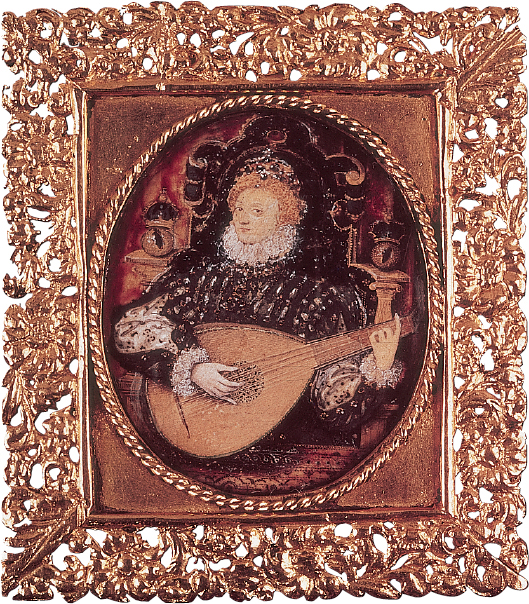The English Madrigal

Queen Elizabeth I playing the lute. This miniature portrait is reproduced close to its original size. Berkeley Castle, Gloucestershire, UK/The Bridgeman Art Library.
A genre like the madrigal, tied so closely to its words — Italian words — would seem difficult to transplant. Even so, Italian madrigals became all the rage in Elizabethan England and led to the composition of madrigals in English. This popularity may well have reflected the taste and interests of Queen Elizabeth I herself. The Virgin Queen not only maintained a splendid musical establishment, like all other ambitious monarchs and princes of the time, but also became an accomplished musician in her own right.
In 1601, twenty-three English composers contributed madrigals to a patriotic anthology in Elizabeth’s honor, called The Triumphs of Oriana. All the poems end with the same refrain: “Then sang the shepherds and nymphs of Diana: Long live fair Oriana!” Oriana was a pseudonym for Elizabeth, and the nymphs and shepherds of Diana — the goddess of virginity — were her subjects. The Triumphs was obviously a court-inspired project, and as such it reminds us vividly of one of the main functions of court music in all ages: flattery.
